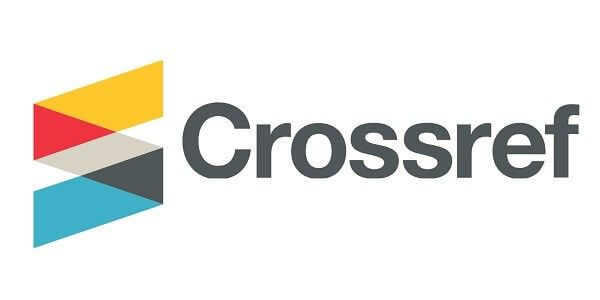Utilization of the algebraic method in the design and development of the ChemRxnCalc mobile application prototype
Keywords:
balancing chemical equations, chemistry e-learning tool, equitable quality education, mobile application prototypeAbstract
Responding to the need to create an “equitable learning space” for Chemistry students in the new normal classes, the authors designed a mobile application prototype named ChemRxnCalc. It is intended to help students balance chemical equations by predicting products and their coefficients from given chemical reactants accurately and using the algebraic method. Upon the development of the mobile application prototype for Android mobile phones, it was subjected to an initial validation by eight (8) Chemistry teachers deemed to be the subject-matter experts and which yielded a high usability percentage following the software quality requirements set by the ISO/IEC 25010. It is recommended for second-phase validation by students. This could be accomplished by uploading the e-tool to the RedCanvas learning management system (LMS) of the University. The initial target users are the Senior High School and College Students of San Beda University, Manila, and probably, the Mendiola Consortium who are taking up General Chemistry and/or Inorganic Chemistry. Consequently, once the ChemRxnCalc mobile application prototype has been validated by both experts and students, it is intended to be patented thru registration in the Intellectual Property Office of the Philippines (IPO). It is also targeted to be registered and uploaded in the Google Playstore and Apple Appstore for consumption of a bigger teacher and student population.
References
Braun V. & Clarke V. (2019) Reflecting on reflexive thematic analysis, qualitative research in sport, exercise and health, 11:4, 589-597, http://doi.org/10.1080/2159676X.2019.1628806
Braunschweigh D. (n.d.) Input-process-output model. Rebus community. Programming Fundamentals. Creative Commons Attribution-Share Alike 4.0 International License
Britton, J. (n.d.) What is ISO 25010? https://www.perforce.com/blog/qac/what-is-iso-25010
Calaprice, A. (2010) The quotable Einstein. http://www.goodreads.com
Charnock, N. (2016). Teaching methods for balancing chemical equations: An inspection versus an algebraic approach. http://pubs.sciepub.com/education/4/7/2/index.html
Creswell, J. W. (2014). Research design: Qualitative, quantitative and mixed methods approaches (4th ed.). Sage., J.
Creswell, J.W. and Plano Clark, V.L. (2011) Designing and conducting mixed methods research. (2nd Ed.), Sage Publications.
Curtis, H. (1922). The algebraic method of balancing a chemical equation. Science, 56(1444), 258-260. http://www.jstor.org/stable/1647136
Gabriel, C.I. & Onwuka, G.I. (2015) Balancing of chemical equations using matrix algebra. Journal of Natural Sciences Research, 3, 29-36.
Gibbs, G. R. (2007). Qualitative research kit: Analyzing qualitative data. SAGE Publications, Ltd http://doi.org/10.4135/9781849208574
Hamid, I. (2019). Balancing chemical equations by systems of linear equations. Applied Mathematics. 10. 521-526. 10.4236/am.2019.107036. https://www.researchgate.net/publication/334396583_Balancing_Chemical_Equations_by_Systems_of_Linear_Equations
IPOPHIL (n.d.). Intellectual property office of the Philippines. http://wwww/iphophil.gov.ph
kotlinlang.org (n.d.). Kotlin.v.16.21 Website. https://kotlinlang.org/docs/faq.html#where-can-i-get-an-hd-kotlin-logo
MacCuspie R.I. & Drake C. (2014). A framework for identifying performance targets for sustainable materials. Science Direct.1-2. 17-25
Parker, C., Scott, S. and Geddes, A. (2019) Snowball sampling. SAGE Research Methods Foundations. (In Press) UN DESA (2020). SDGs Learning, Training and Practice- 2020 Edition Report. http://www.sdgs.un.org
Richey, R. (1994) Developmental research: The definition and scope. ERIC.ed.gov. http.ERIC.ed.https://eric.ed.gov/?id=ED373753
Saberon, C.B. (2021) Development and pilot validation of E-SCRIBE: An E-Learning aid that utilizes algebraic expressions in solving chemical reaction problems. An Unpublished Master Thesis. The National Teachers College
Sutton, M. (2020, September 21). How to develop a new product (From concept to market). https://www.shopify.com.ph/blog/productdevelopment-process
Vasquez, J. (2018). The importance of mathematics in the development of science and technology [PDF]. http://verso.mat.uam.es/~juanluis.vazquez/reptmath.pdf
- PDF | 142
- Abstract Views | 260
Published
How to Cite
Issue
Section
Copyright (c) 2023 Ma. Eliza Cruz, Jake Libed

This work is licensed under a Creative Commons Attribution-NonCommercial-NoDerivatives 4.0 International License.











